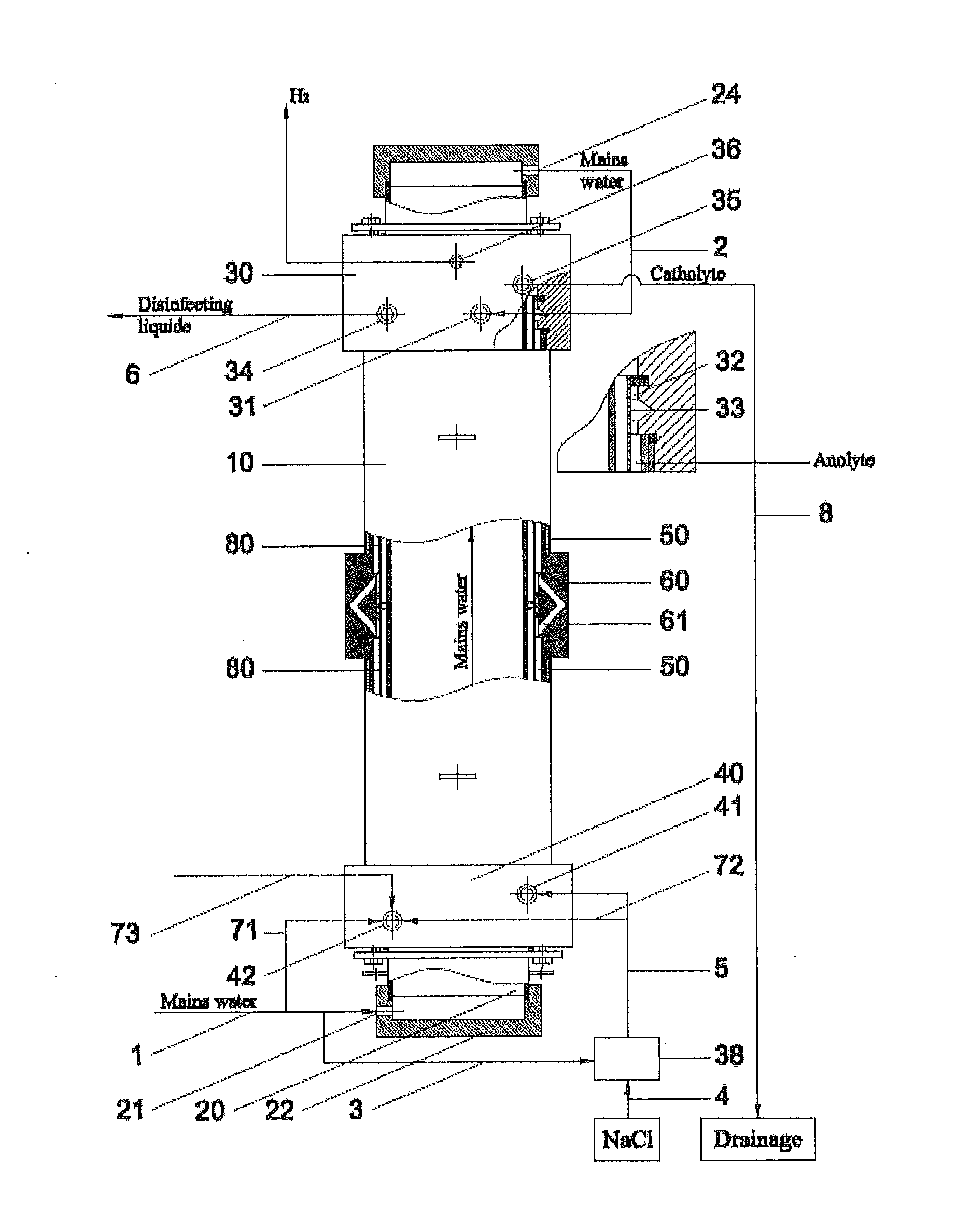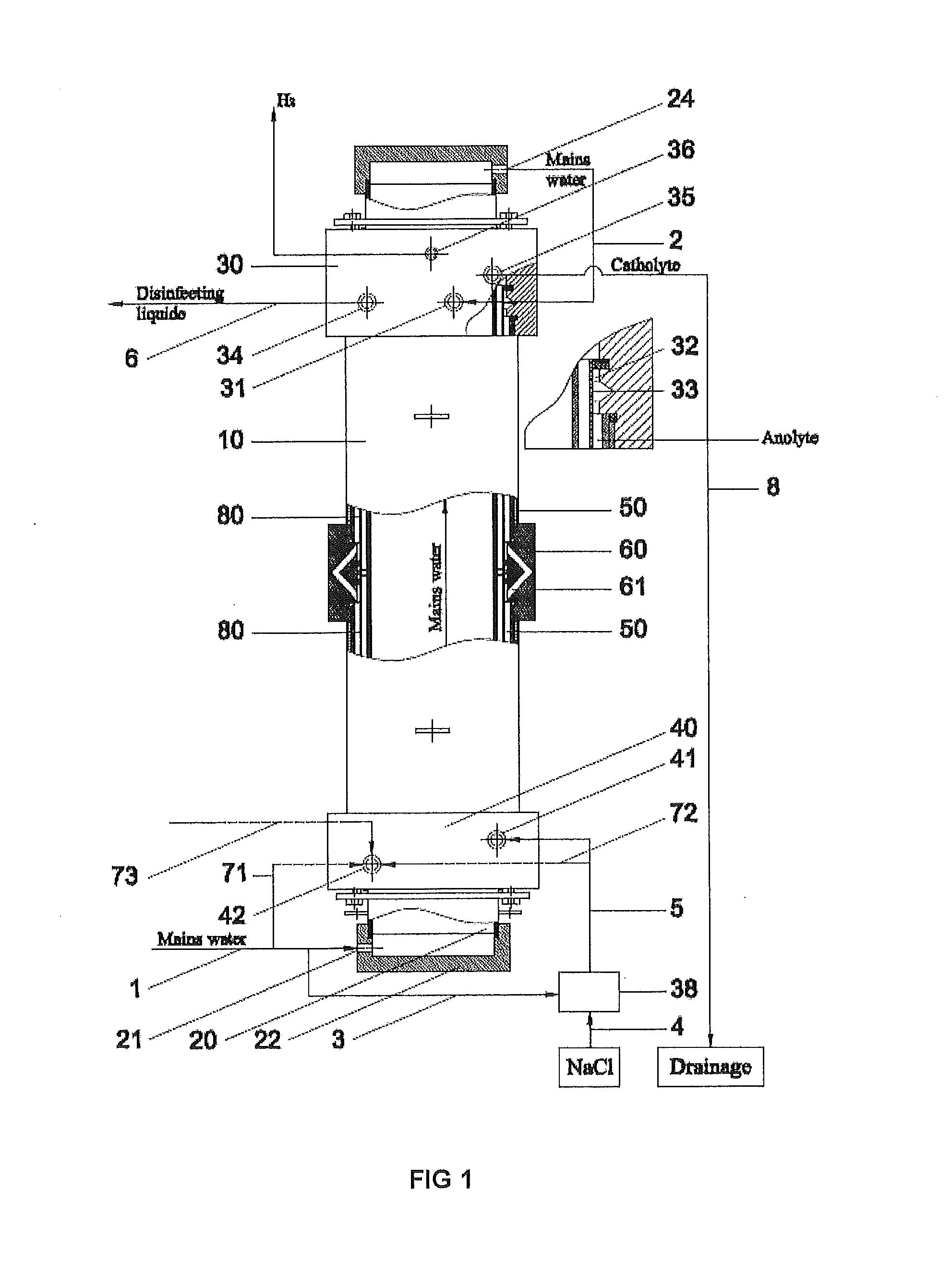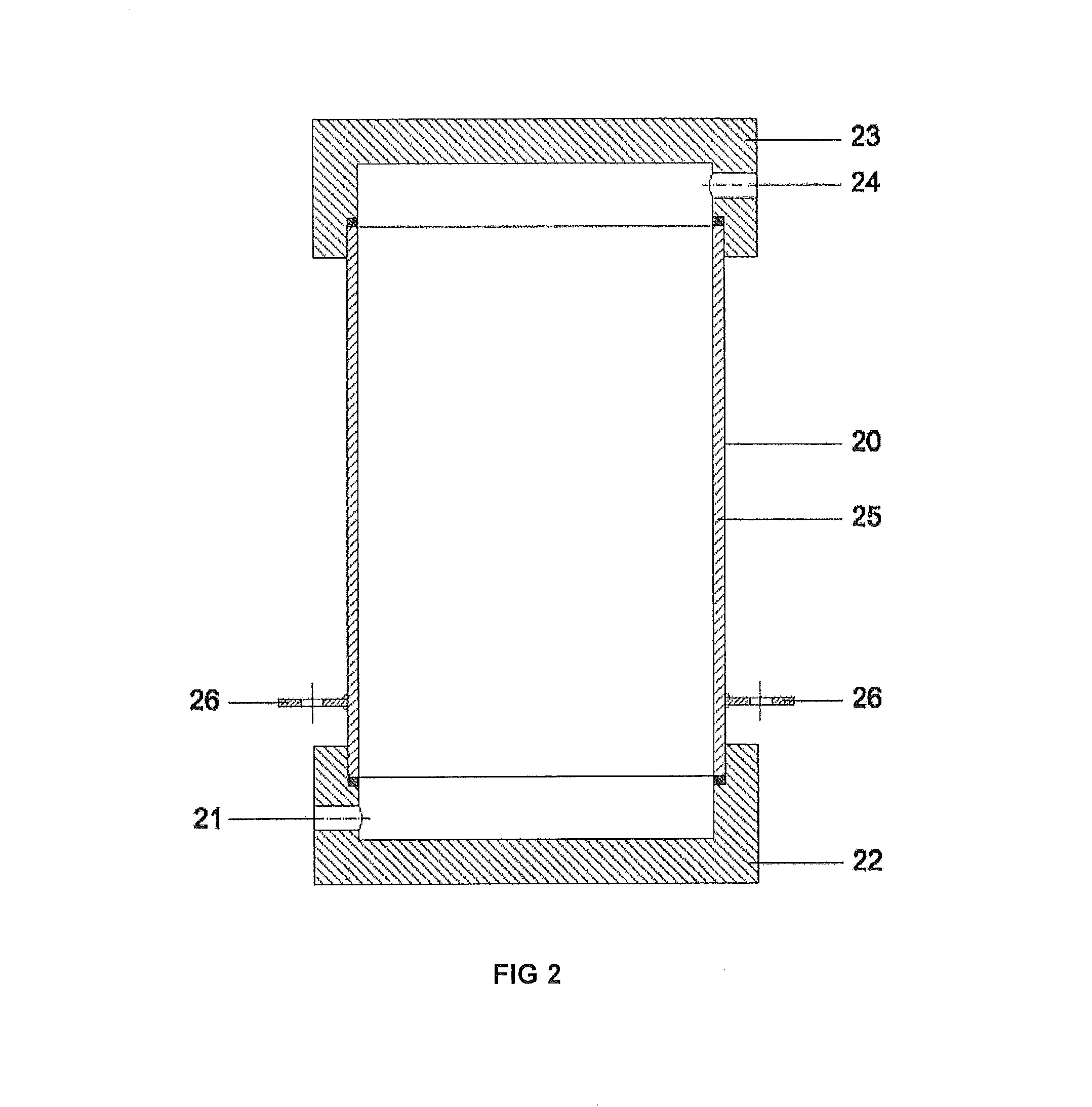Method and electrolyser for disinfectant production
a disinfectant and electrolyte technology, applied in the field of chemical engineering, can solve the problems of low salt efficiency, insufficient methods, and increased production costs, and achieve the effects of facilitating the emergence of a neutral ph level, high productivity, and enhancing the reliability of the hydraulic schem
- Summary
- Abstract
- Description
- Claims
- Application Information
AI Technical Summary
Benefits of technology
Problems solved by technology
Method used
Image
Examples
example 1
[0033]Example 1 gives the results of the method employed in Russian patent RU2297980, which have been achieved with an electrolyser disclosed in pending patent application US2009266709, having the geometrical parameters of the electrode chambers and the diaphragm, anode, cathode and anode covering materials, which are identical to the electrolyser, developed within the framework of this intention, used in examples 2, 3, 4 and 5. The results of example 1, obtained with the method employed in Russian patent RU2297980, are used to compare the results of other examples, as the utilized method is widely used, safe, and reproducible, as ready to use disinfectant and the catolyte is flowing out from the electrolyser. Electrodes are inserted into anode and cathode chamber without any prior electro-chemical treatment and the method shall be operable without any assistance from various auxiliary equipment, for example, circulation circuits, additional electrolysers and pressure regulating dev...
example 2
[0035]Example 2 gives the results for obtaining disinfectant under minimum flow conditions through the cathode and anode chamber, using exemplary flow rate intervals specified by this disclosure. Fresh water is channelled from an external course through channel 1 (the quantity being 1,204 litres per hour (100%)) through the inlet 21 in the cover 22 of cathode 20 to internal space in the cathode, cooling the cathode and also the electrolyte in cathode chamber. After cooling the cathode, the fresh water will flow through channel 2, outlet 24 in the cover of 23 to the inlet 31 of cover-mixer 30 in the branch of the anode chamber 32. In the area of channel 1 or 2 (not really relevant, depending on the construction of the device), before inlet 31, two flows are separated from the fresh water flow: along channel 71 (channels 72 and 73 are missing in this alternative) 4.8 litres of fresh water per hour (0.4%) to the inlet of the cathode chamber. Along channel 3 fresh water will be flowing ...
example 3
[0036]In example 3 the disinfectant is obtained by allowing the fluids to flow along the same route, which was specified in example 2, but at the maximum flow rates, set out in this disclosure, through the cathode and anode chambers, respectively, at 0.8% (that is, 10 litres per hour) through the cathode chamber and at 20.6% (that is, 280 litres per hour) through the anode chamber. Disinfectant is produced at the rate of 1,360 litres per hour (active chlorine content 505 mg / l, pH 7.27, reduction potential (ORP) 860 mV), using 6.9 g of sodium chloride per 1 g of active chlorine. The temperature of output solutions will exceed the temperature of water originally used by 5° C. to 15° C.
PUM
| Property | Measurement | Unit |
|---|---|---|
| reduction potential | aaaaa | aaaaa |
| temperature | aaaaa | aaaaa |
| reduction potential | aaaaa | aaaaa |
Abstract
Description
Claims
Application Information
 Login to View More
Login to View More - R&D
- Intellectual Property
- Life Sciences
- Materials
- Tech Scout
- Unparalleled Data Quality
- Higher Quality Content
- 60% Fewer Hallucinations
Browse by: Latest US Patents, China's latest patents, Technical Efficacy Thesaurus, Application Domain, Technology Topic, Popular Technical Reports.
© 2025 PatSnap. All rights reserved.Legal|Privacy policy|Modern Slavery Act Transparency Statement|Sitemap|About US| Contact US: help@patsnap.com



